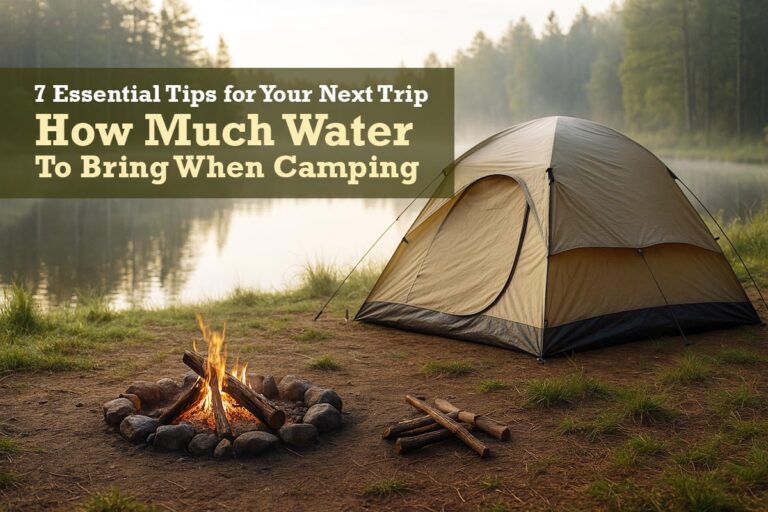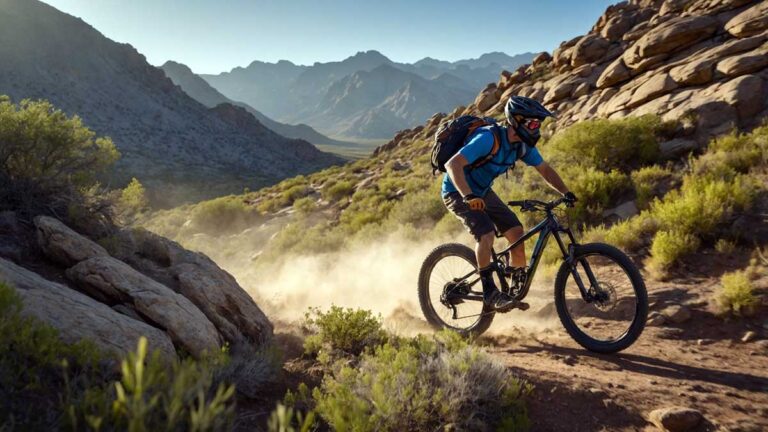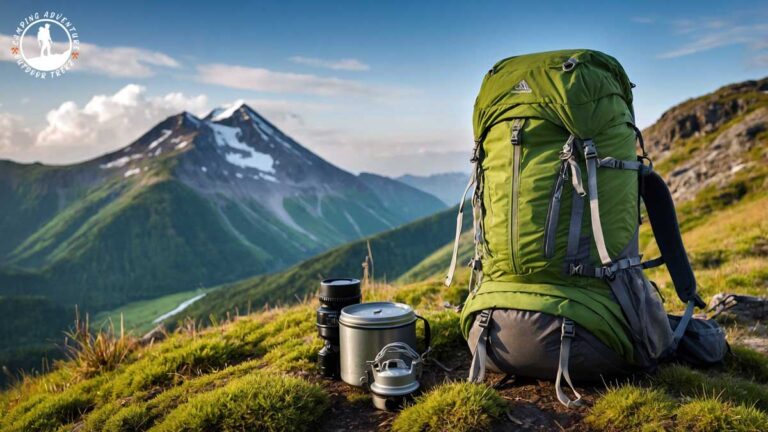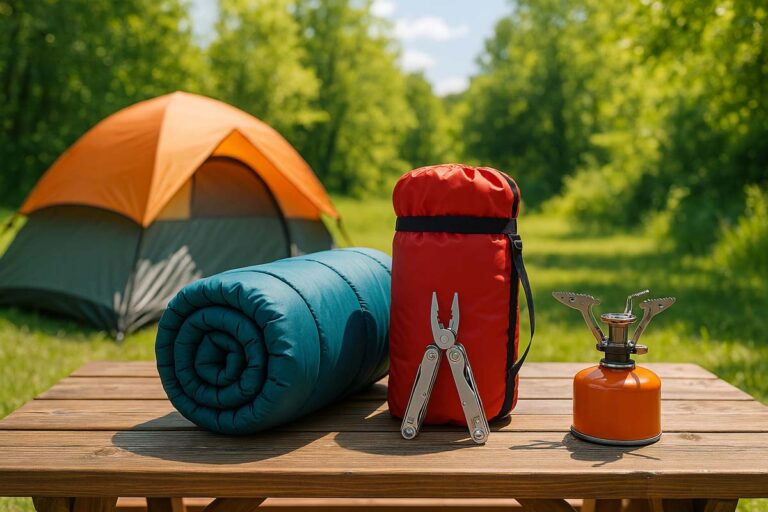How Safe Is the Drinking Water in Camp? 7 Proven Tactics
How safe is the drinking water in camp? Discover 7 expert-tested tips to purify your water and enjoy worry-free adventures. Act now!
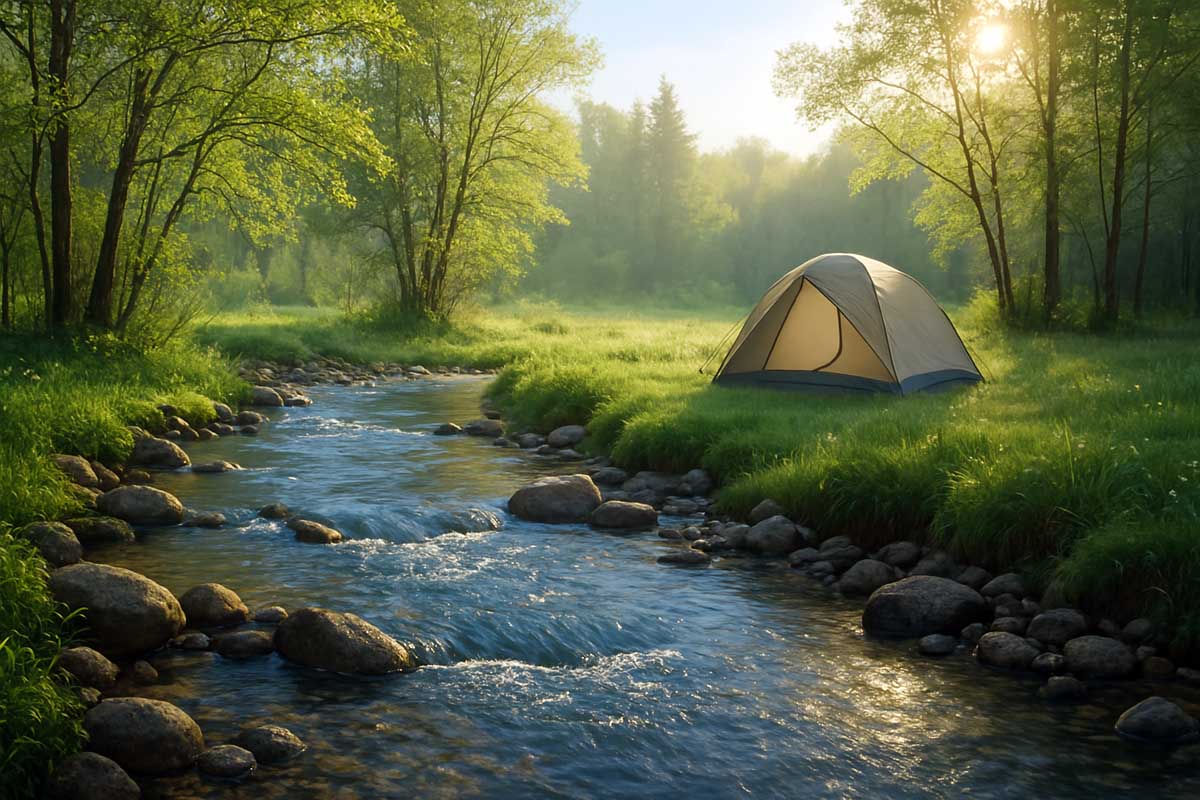
Drinking water in camp can be safe if you source it wisely and treat it properly. As an camper with years of field experience, I make sure my water is always purified using reliable methods—whether it’s filtering, boiling, chemical treatment, or a combination of these—to protect against contaminants that may be present in natural sources. When you are in camp, the water you encounter may come from natural sources such as streams, lakes, or ponds. Although clear water looks inviting, it may contain dangerous microorganisms. By taking the correct precautions, you can greatly reduce your risk of infection. In this article, I share my personal methods and researched advice to help you assess water sources, purify water efficiently, and practice good hydration hygiene.
Key point for readers: Always treat water from natural sources before drinking it—this is the simplest way to ensure safety, and it builds trust in your own camping practices.
Contents Include
- 1 Understanding Water Sources and Their Risks
- 2 Methods for Treating Camp Water
- 3 Recommended Water Purification Tools
- 4 Practical Tips for Camp Water Safety
- 5 Experiences and Lessons I Learned
- 6 Health and Hydration: Why It Matters
- 7 Final Recommendations
- 8 FAQs about How Safe Is the Drinking Water in Camp
- 9 Conclusion
Understanding Water Sources and Their Risks
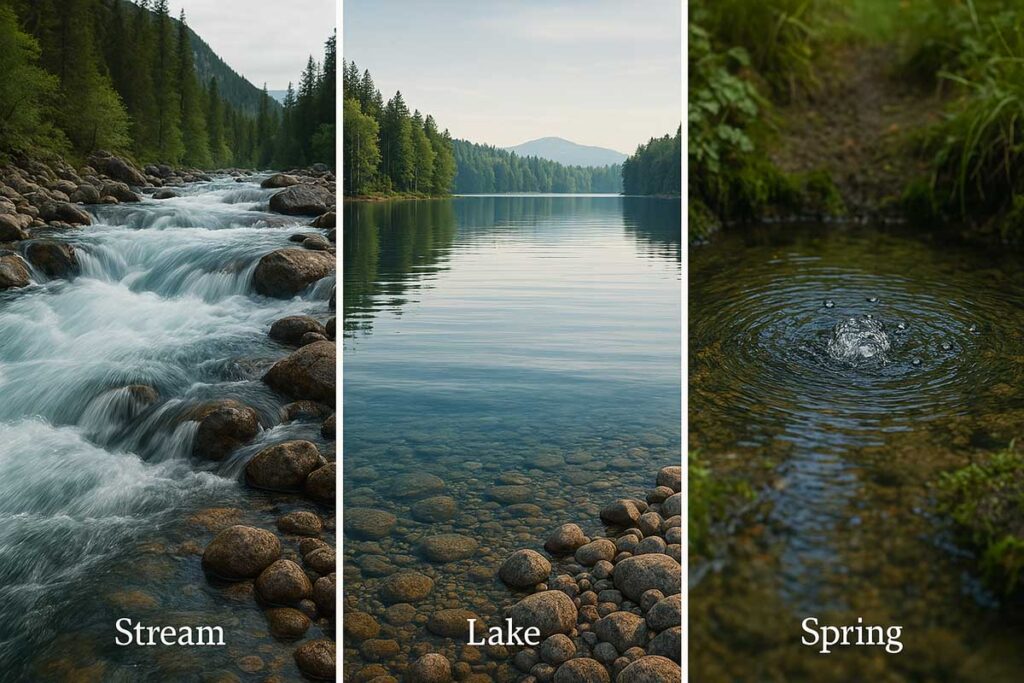
Types of Water Sources
At a campsite, you typically encounter water from the following sources:
- Rivers and Streams: These are dynamic sources where water flows continuously. They are often less contaminated with stagnant organic material, but runoff from nearby land may introduce pollutants.
- Lakes and Ponds: These bodies of water tend to have more sediment and a slower flow, which can lead to higher bacterial counts, especially near shorelines.
- Springs: Water emerging naturally from the ground can sometimes be very clean, but even springs require caution since they can be exposed to surface contamination.
- Rainwater Collection: Water from rain can be clean if it is collected in clean containers; however, storage and handling are important.
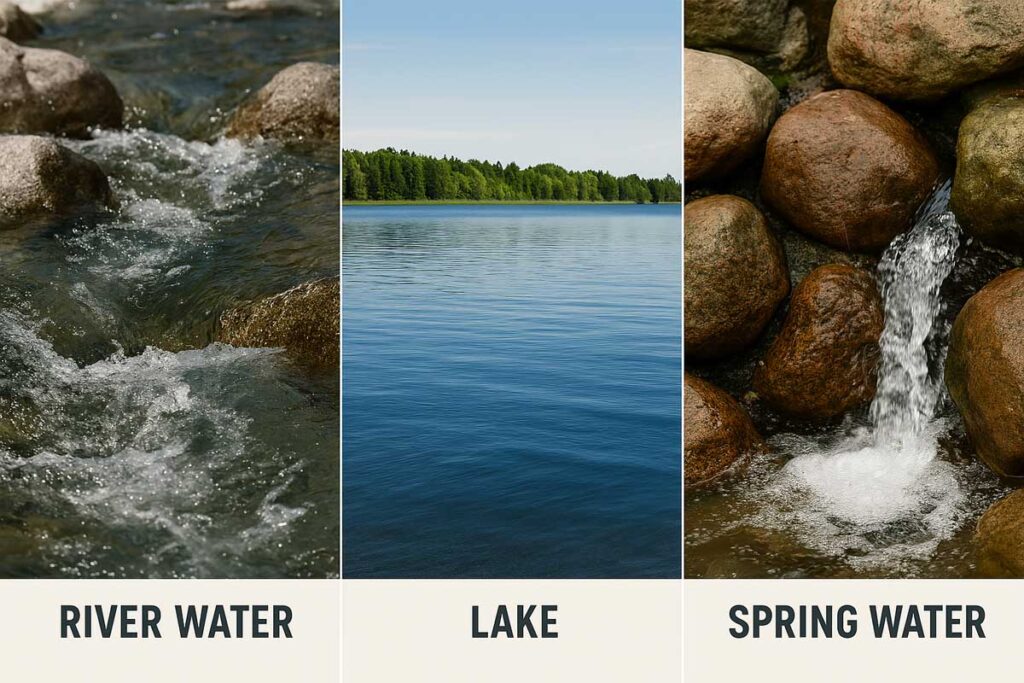
Contamination Risks
Even when water appears clear, it can carry pathogens such as:
- Bacteria: Common bacteria like E. coli, Salmonella, and Campylobacter may be present.
- Protozoa: Organisms such as Giardia and Cryptosporidium are often found in untreated natural water and may lead to gastrointestinal issues.
- Viruses: Though less common in many wilderness areas, viruses can be present—especially where water has been exposed to animal or human waste.
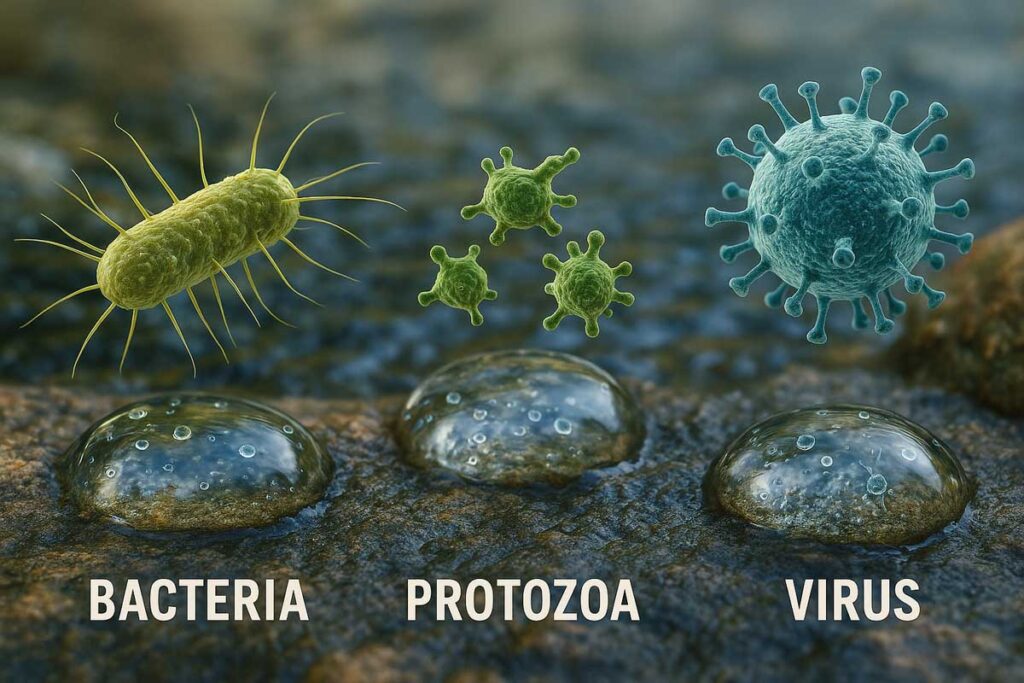
Other factors, such as chemical runoff from agriculture or environmental pollutants, can also impact water quality. It is important to remember that the safety of the water relies on both its source and the treatment it undergoes.
Read more: How Much Water to Bring When Camping
Methods for Treating Camp Water
Before consuming water while camping, using a treatment method is essential. Different methods suit different situations, and you may consider keeping more than one option in your kit as a backup.
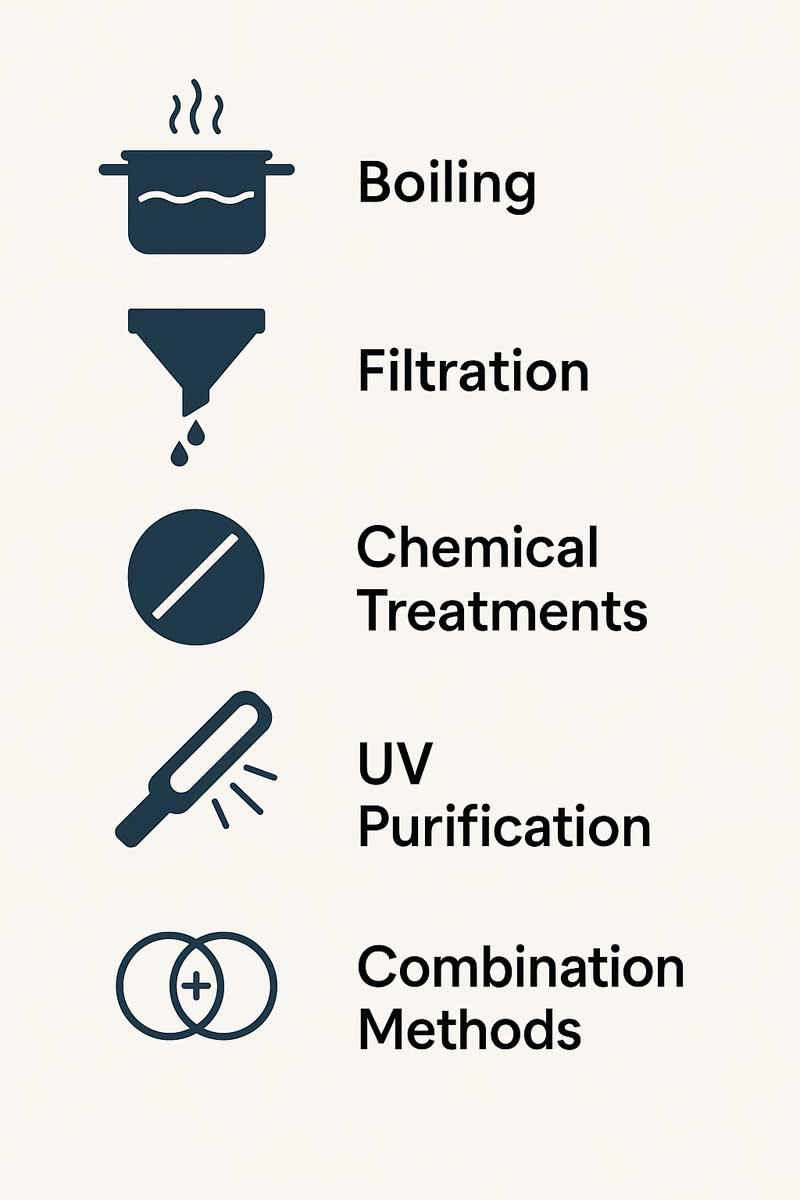
1. Boiling
How it works: Boiling water for at least one minute (or three minutes at higher altitudes) is one of the simplest and most reliable ways to kill bacteria, viruses, and protozoa.
Advantages:
- Simple and effective if you have enough fuel.
- Requires no special equipment apart from a pot or kettle.
- Can be used when other methods fail.
Disadvantages:
- Uses a significant amount of fuel.
- Requires time for both boiling and cooling before drinking.
- Does not remove chemical contaminants or sediments.
Practical Tips:
- Bring a lightweight stove and a small pot.
- Pre-filter muddy water with a cloth or bandanna to remove debris before boiling.
- Remember that even after boiling, water should be stored in clean, covered containers to avoid re-contamination.
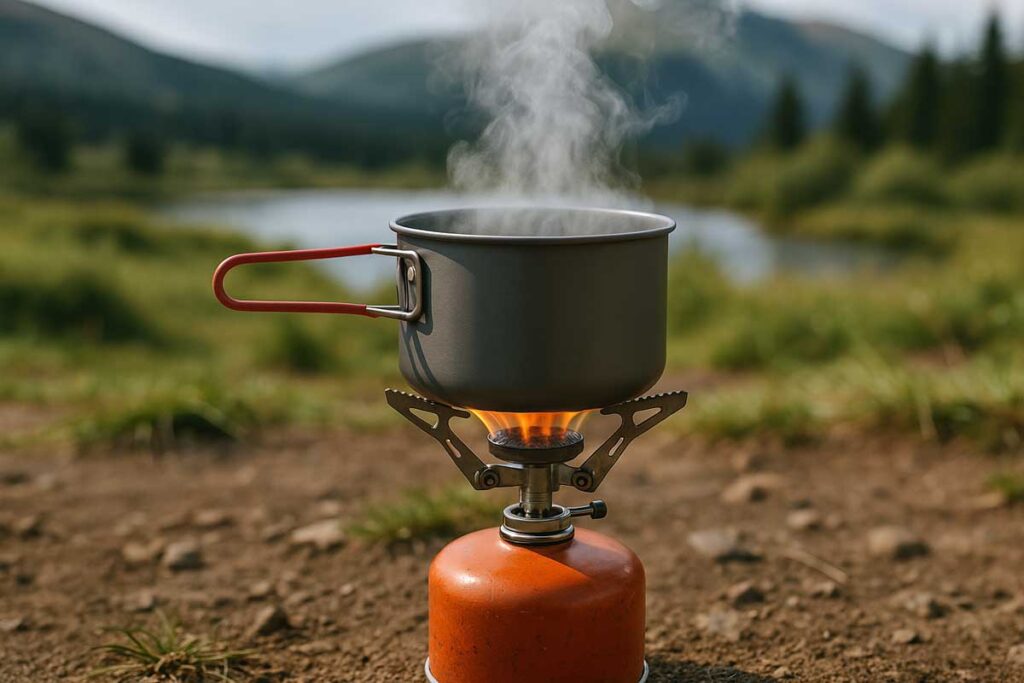
2. Filtration
How it works: Portable filters use a physical barrier, often a ceramic or hollow fiber membrane, to remove pathogens and particulates from water.
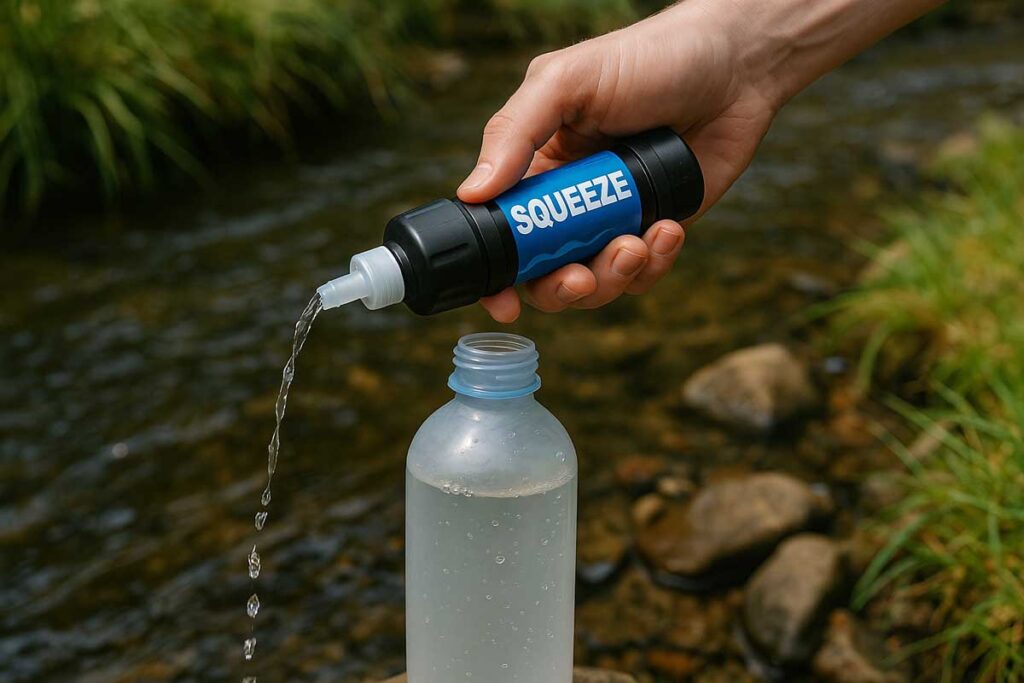
Common Devices:
- Squeeze Filters: Devices like the Sawyer Squeeze are popular due to their lightweight design and ease of use. They work by pressing water through a replaceable filter cartridge.
- Pump Filters: Hand-pump filters physically push water through a ceramic element. These are ideal for group use when you need larger volumes.
- Gravity Filters: Systems such as the Platypus GravityWorks allow you to fill a “dirty” water bag and let gravity force the water through a filter into a clean reservoir.
Advantages:
- Removes most bacteria and protozoa.
- Filters out sediments, which also improves taste.
- Suitable for many backcountry applications.
Disadvantages:
- Many filters do not remove viruses; if you are in an area where viruses may be present (e.g., international travel), you may need additional chemical treatment.
- Filters require routine cleaning and periodic replacement.
- They may clog in very turbid or muddy water, so pre-filtering may be necessary.
Maintenance Tips:
- Regularly backflush or clean the filter as instructed by the manufacturer.
- Keep spare cartridges in your kit for longer trips.
3. Chemical Treatments
How it works: Chemical disinfectants such as iodine tablets or chlorine dioxide drops kill pathogens in water. They are often used by adding the tablets or drops directly into your water bottle.
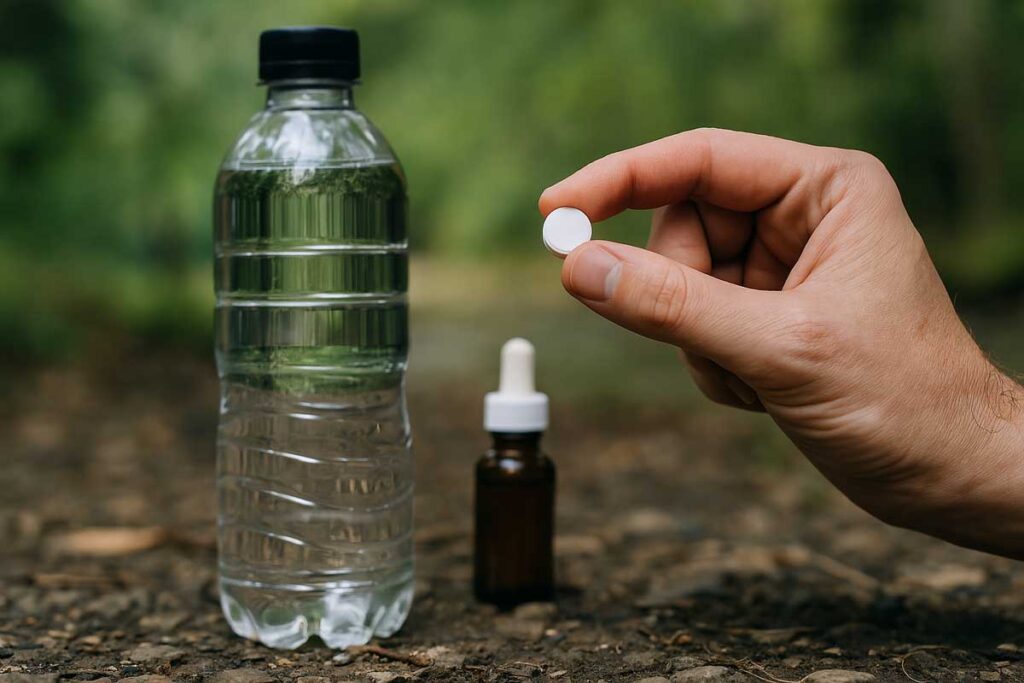
Advantages:
- Extremely lightweight and space-saving.
- Ideal for long treks where carrying equipment is a concern.
- Effective against bacteria, viruses, and protozoa if given enough time to work.
Disadvantages:
- Requires a waiting period (usually 15–30 minutes, sometimes longer for resistant protozoa) before water is safe.
- May alter the taste of water, although neutralizing tablets (such as vitamin C) can help reduce this effect.
- Does not remove sediments or particulates.
Best Practices:
- Always follow the manufacturer’s instructions regarding dosage.
- If the water is very cold or turbid, expect to wait a longer time for the disinfectant to be fully effective.
4. Ultraviolet (UV) Light Purification
How it works: UV devices, such as the SteriPEN, work by emitting ultraviolet light that disrupts the DNA of pathogens, rendering them unable to reproduce.
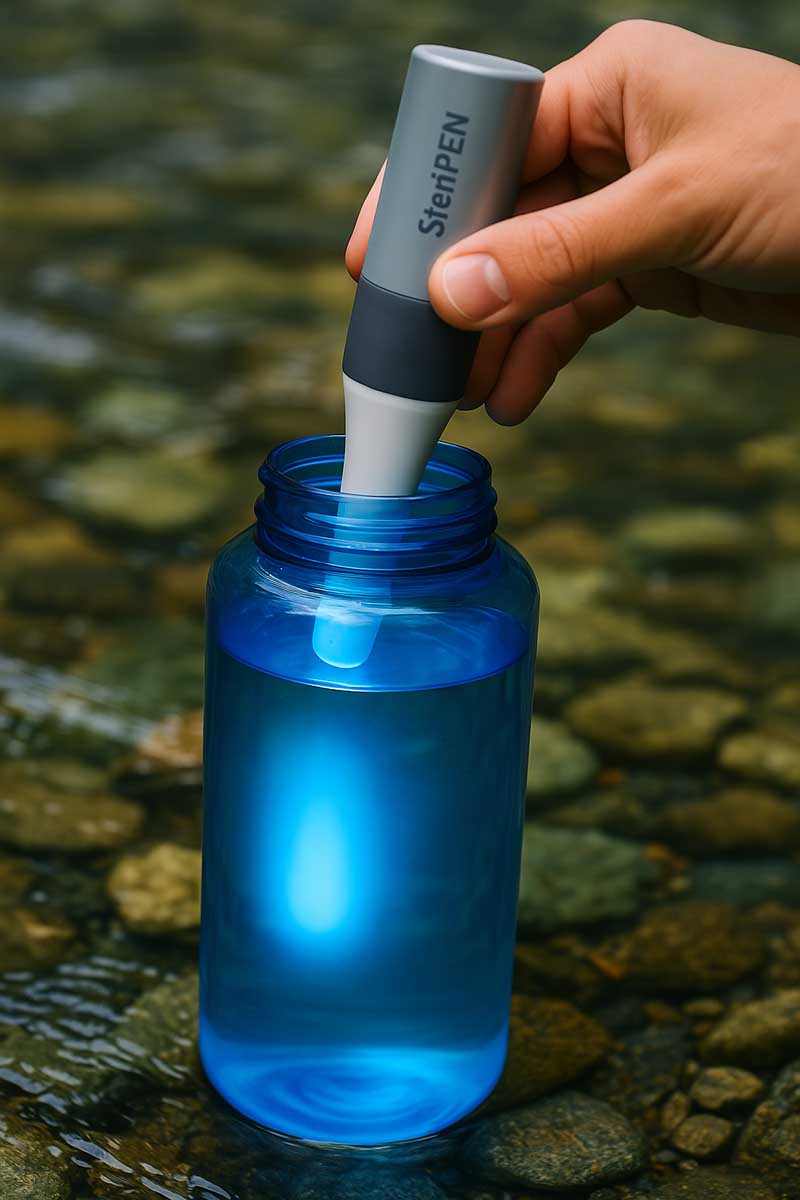
Advantages:
- Fast treatment time (usually about 90 seconds per liter).
- Does not add chemicals to the water, so taste is generally unaffected.
- Effective against a wide range of microorganisms.
Disadvantages:
- Requires batteries and careful maintenance of the device.
- Works best in clear water; turbid or murky water can block UV rays, reducing effectiveness.
- Treats only one bottle at a time, which may slow you down if you need a large volume of water quickly.
Tips for Use:
- Pre-filter the water if it is cloudy.
- Make sure your device is fully charged before your trip.
- Avoid exposing treated water to sunlight for extended periods after treatment, as this may lead to reactivation of some microorganisms.
5. Combination Methods
Often, the best approach is to combine methods to ensure thorough purification. For instance:
- Filter then Treat: First, remove sediments and protozoa using a filter, and then add a chemical disinfectant to kill viruses that the filter may not remove.
- UV after Filtration: Use a filter to clear the water and then treat it with UV light for additional protection.

This dual approach provides multiple layers of defense against harmful contaminants, especially in areas where the water source is questionable.
Recommended Water Purification Tools
Here are some reliable tools for water purification during camping:
| Tool | Type | Features |
|---|---|---|
| Grayl GeoPress | Purifier | Removes viruses, bacteria, protozoa, and chemicals; fast processing. |
| LifeStraw Go | Filter Bottle | Removes bacteria and protozoa; integrated straw for direct drinking. |
| Sawyer Squeeze | Filter | Lightweight; attaches to standard water bottles; removes bacteria and protozoa. |
| Steripen Ultra | UV Purifier | Compact; treats water in 90 seconds; rechargeable. |
See more: What to Bring Camping
Practical Tips for Camp Water Safety
Here are some easy-to-follow tips that have served me well on the trail:
- Plan Ahead: Before you set out, research the water sources in the area. Check if campgrounds or local authorities provide guidance on which sources are safe.
- Pack Multiple Options: Carry a small stove, a reliable filter, and a few chemical tablets, so you can adapt to different conditions.
- Keep Equipment Clean: After each use, rinse your filters and devices with clean water. This maintenance extends their service life and prevents cross-contamination.
- Store Treated Water Safely: Use clean, covered containers to store water. Avoid transferring water between various containers unnecessarily.
- Monitor Water Appearance: Don’t rely solely on the look of the water. Even clear water can be contaminated, so treat every water source unless you are absolutely certain it comes from a protected spring with documented safety.
- Hygiene Practices: Wash your hands frequently, particularly before preparing food. When you use natural water sources for washing or brushing teeth, use treated water if possible.

Below is a checklist you can print out and keep in your gear bag:
| Water Safety Checklist | Action |
|---|---|
| Research local water sources | Identify streams, ponds, springs, and potential contaminants |
| Pack a lightweight stove and pot | For boiling water |
| Carry a portable water filter | Squeeze, pump, or gravity filter as backup |
| Include chemical disinfectants | Iodine tablets or chlorine dioxide drops |
| Bring a UV light purification device | SteriPEN or similar, with extra batteries |
| Pre-filter cloth or bandanna | Remove sediments before treatment |
| Clean and store treated water properly | Use clean, covered containers |
| Maintain hygiene | Hand sanitizer, soap, and separate utensils |
This list can help ensure that you have all the tools you need to make safe water a priority during your camping trip.
Experiences and Lessons I Learned
Over the years, I have encountered various water conditions while camping in different regions. Here are a few scenarios from my experience:

1: Clear Mountain Streams
In the mountains, I have often found clear, fast-flowing streams that appear ideal. However, I always treat the water with my portable filter. Even though the water looks clean, the potential presence of bacteria and protozoa remains. Filtering these streams not only removes microorganisms but also improves the taste, making the water more refreshing after treatment.
2: Stagnant Ponds
I have camped near ponds where the water was turbid and still. In these cases, my approach was twofold: first, I used a bandanna to pre-filter larger particles, and then I boiled the water. The boiling step ensured that any lingering harmful microorganisms were destroyed. This method is particularly important in areas where animal activity is high, as ponds can quickly become contaminated.
3: International and Urban Settings
When traveling internationally or camping in urban fringes, I sometimes encounter water that may be subject to additional chemical contamination. In such cases, I opt for a combination of filtration and chemical disinfectants. This dual method provides protection against both biological and chemical hazards, ensuring that the water is safe regardless of its source.
4: Cold Weather Conditions
In cold weather, water tends to be clear but poses the challenge of fuel consumption if you choose to boil. In such situations, UV treatment becomes a preferred method as long as the water is pre-filtered to remove any particles. The portable UV devices I’ve used perform well under these conditions but require careful battery management in freezing temperatures.
Health and Hydration: Why It Matters
Safe water is crucial not only for quenching thirst but also for preventing waterborne illnesses such as diarrhea, vomiting, and other gastrointestinal issues. These illnesses can be particularly debilitating when you’re far from medical help. In my experience, even a mild case of stomach upset can disrupt several days of camping. Therefore, investing in a reliable water treatment system is an investment in your overall health and the success of your outdoor experience.
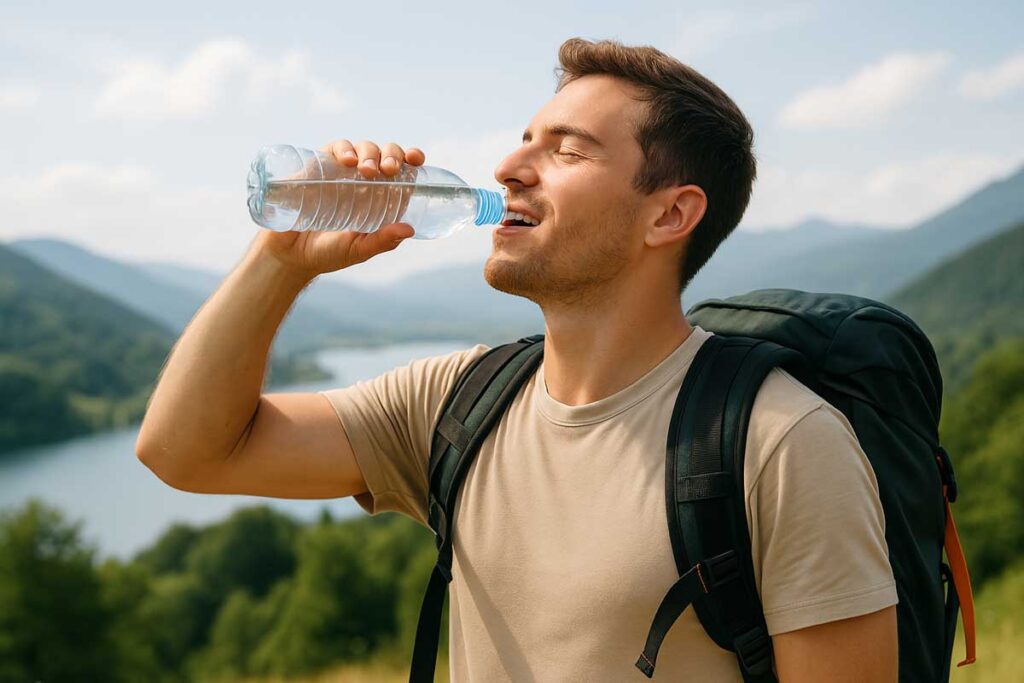
Maintaining hydration with clean water also enhances your physical performance. When your body is well-hydrated, you’ll feel more energetic and better prepared to handle the physical demands of hiking and setting up camp. This is why I always emphasize water safety as a foundational aspect of any camping trip.
Final Recommendations
After many years of camping and consulting various sources, here are my final recommendations on managing water safety in camp:
- Always Assume Natural Water is Unsafe: Even if a water source appears clear, treat it before consumption.
- Use a Combination Approach: Relying on more than one method (for example, filtering followed by chemical treatment) provides the best protection.
- Pack Light, Pack Smart: Ensure your camping kit includes multiple backup methods for water treatment, especially on longer trips.
- Practice Regular Maintenance: Clean and store your equipment properly. A well-maintained filter or UV device is far more effective than one that is neglected.
- Follow Local Guidelines: In some regions, local authorities may have tested water sources and provided advisories. Always follow these recommendations for the safest experience.
- Educate Yourself Continuously: New techniques and devices for water treatment are emerging. Stay updated with the latest research and recommendations from trusted sources such as the Centers for Disease Control and Prevention (CDC) and the World Health Organization (WHO).
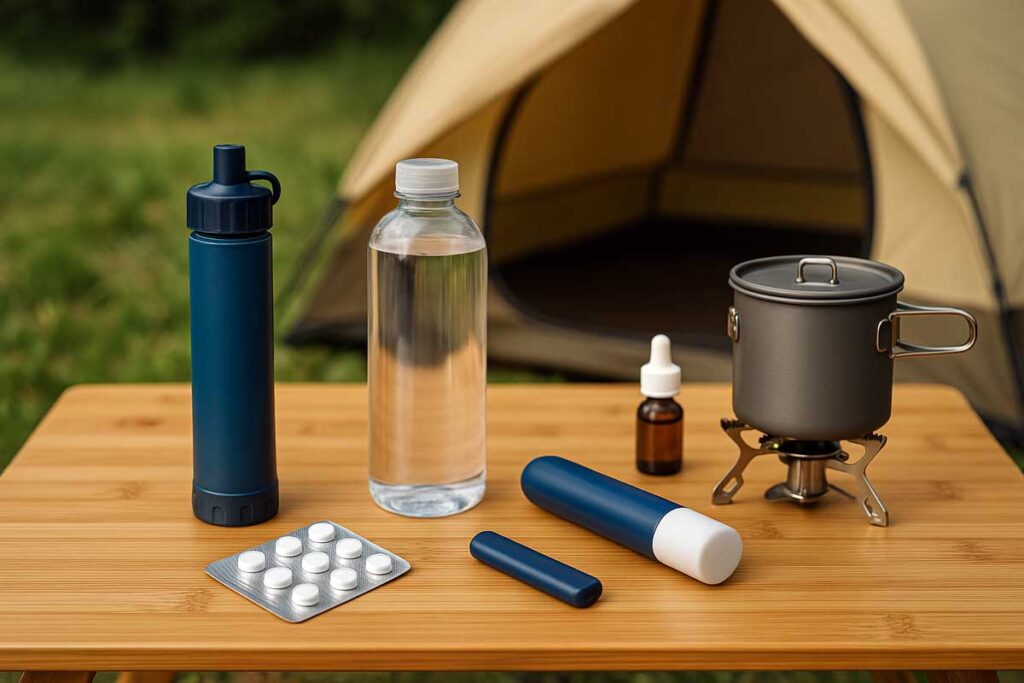
FAQs about How Safe Is the Drinking Water in Camp
Conclusion
In camp, the safety of drinking water is not guaranteed by appearance alone. It is determined by the quality of the source and, more importantly, by the treatment methods applied. Whether you choose to boil your water, use a portable filter, add a chemical disinfectant, or employ UV light purification, each method has its benefits and limitations. I have found that a combination of techniques often delivers the best results in varied conditions.
Remember, the key is consistency in your water treatment routine and ensuring that your equipment is clean and ready for use. By taking these practical steps, you can enjoy the outdoors with confidence that you and your fellow campers are well-protected against waterborne illnesses. Safe water means a healthier, more enjoyable camping experience—and that is something every outdoor enthusiast should prioritize.
Keep this guide handy on your trips as a reference, and adjust your water treatment practices as needed based on the conditions you encounter. Drinking water should always support your journey, keeping you energized and healthy, no matter where your camping adventures take you.
Stay safe and stay hydrated!


